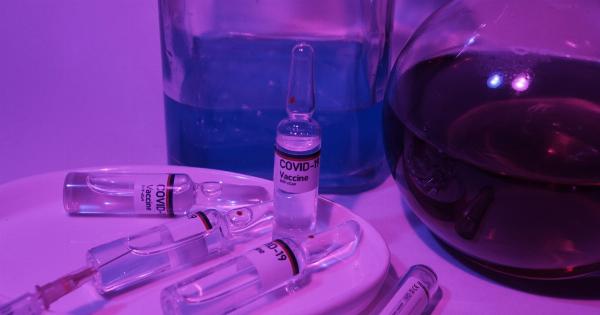The urinary tract plays a vital role in the elimination of waste and regulation of fluid balance within our bodies.
Composed of various organs, including the kidneys, ureters, bladder, and urethra, the urinary system ensures the proper functioning of our urinary functions. Monitoring and checking the health of your urinary tract are crucial for identifying any potential issues and seeking timely medical intervention.
In this article, we will discuss how to check your urinary tract function, common symptoms, causes, diagnosis methods, and preventive measures.
Common Symptoms of Urinary Tract Issues
Urinary tract disorders can manifest through a range of symptoms that may vary in severity. Recognizing these symptoms can help you identify potential urinary tract issues and take appropriate action. Some common symptoms to watch out for include:.
- Frequent urination: Feeling the need to urinate more often than usual.
- Urgency: A sudden and intense urge to urinate.
- Dysuria: Pain or discomfort while urinating.
- Hematuria: The presence of blood in the urine.
- Cloudy or strong-smelling urine: Abnormal changes in urine appearance or odor.
- Pelvic pain: Discomfort or pain in the lower abdomen or pelvic region.
- Lower back pain: Aching or discomfort in the lower back, sometimes indicating kidney issues.
- Urinary incontinence: Involuntary leakage of urine.
- Recurrent urinary tract infections (UTIs): Frequent bacterial infections affecting the urinary tract.
- Slow urine flow: Difficulty starting or maintaining a steady urine stream.
Causes of Urinary Tract Issues
Urinary tract issues can have various underlying causes, ranging from infections to anatomical abnormalities. Understanding these causes can help you assess your urinary tract function and take necessary preventive measures. Some common causes include:.
- Urinary tract infections (UTIs): Bacterial infections that affect the urinary tract.
- Kidney stones: Hard deposits formed in the kidneys that can obstruct urine flow.
- Bladder or kidney infections: Infections that specifically target the bladder or kidneys.
- Prostate enlargement: Benign prostatic hyperplasia (BPH) can lead to bladder outlet obstruction.
- Urinary incontinence: Weakening of the muscles that control urination.
- Interstitial cystitis: A chronic condition characterized by bladder inflammation.
- Urinary tract obstructions: Structural abnormalities or blockages that impede urine flow.
- Neurological conditions: Nerve or spinal cord damage affecting urinary function.
- Urinary tract injuries: Trauma or accidents that damage the urinary system.
- Certain medications: Certain drugs can affect urinary function as a side effect.
Diagnosing Urinary Tract Function
When you suspect a potential issue with your urinary tract function, it is essential to seek a medical evaluation for an accurate diagnosis. Healthcare professionals use various diagnostic methods to assess urinary tract health.
Some common diagnostic tests include:.
1. Urinalysis
A urinalysis involves analyzing a urine sample to detect any abnormalities, such as the presence of blood, bacteria, or other substances. It can provide valuable insights into kidney function and the presence of infections or other issues.
2. Imaging Tests
Imaging tests, such as ultrasounds, CT scans, or MRIs, help visualize the urinary tract’s internal structures. These tests can detect abnormal growths, stones, obstructions, or other structural issues that may affect urinary function.
3. Urodynamic Testing
Urodynamic testing assesses the bladder’s pressure and urine flow rates. It can help identify problems with muscle control or obstructions in the urinary tract.
These tests may involve filling the bladder with water and measuring pressure responses or evaluating the flow of urine during voiding.
4. Cystoscopy
Cystoscopy involves inserting a thin tube with a tiny camera into the urethra to examine the bladder and urethra’s inner lining.
This procedure helps identify abnormalities, such as ulcers, stones, or tumors, and can also assist in taking tissue samples for further evaluation.
Preventing Urinary Tract Issues
While not all urinary tract problems can be prevented, adopting certain lifestyle habits can significantly reduce the risk of developing urinary tract issues. Here are some preventive measures you can take to maintain a healthy urinary tract:.
1. Stay Hydrated
Drinking an adequate amount of water helps dilute urine and flush out bacteria from the urinary tract. Aim for at least eight glasses of water per day, unless otherwise advised by your healthcare provider.
2. Practice Good Hygiene
Proper personal hygiene, especially in the genital area, helps prevent the spread of bacteria that can cause urinary tract infections.
Wiping from front to back after urination or bowel movements can help reduce the risk of bacteria entering the urethra.
3. Empty Your Bladder Regularly
Avoid holding urine for prolonged periods, as this can increase the risk of bacterial growth and urinary tract infections. Ensure you empty your bladder fully during each visit to the bathroom.
4. Urinate Before and After Sexual Activity
Urinating before and after sexual intercourse helps flush out bacteria that may have entered the urethra during the activity. This practice can help prevent urinary tract infections.
5. Practice Safe Intercourse
Using safe sex practices, such as condoms, can reduce the risk of sexually transmitted infections that can lead to urinary tract issues.
6. Avoid Irritants
Avoid or limit the consumption of substances that can irritate the urinary tract, such as caffeine, alcohol, spicy foods, and artificial sweeteners. These irritants can worsen urinary symptoms in individuals with sensitive urinary tracts.
7. Maintain a Healthy Weight
Excess weight can put pressure on the bladder and urethra, increasing the risk of urinary incontinence and urinary tract obstructions. Maintaining a healthy weight through regular exercise and a balanced diet can help support urinary tract function.
8. Practice Pelvic Floor Exercises
Strengthening the pelvic floor muscles through exercises, such as Kegels, can improve bladder control and reduce the risk of urinary incontinence.
9. Take Probiotics
Probiotics, such as lactobacillus, can help maintain a healthy balance of bacteria in the urinary tract, reducing the risk of urinary tract infections.
10. Regular Check-ups
Regular check-ups with your healthcare provider allow for the early detection and management of any potential urinary tract issues. Don’t hesitate to seek medical advice if you experience concerning symptoms or changes in urinary function.






























